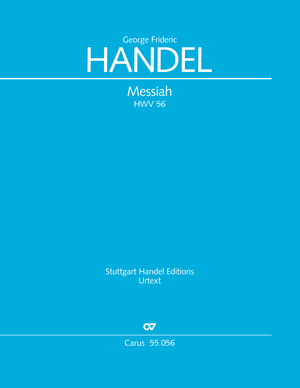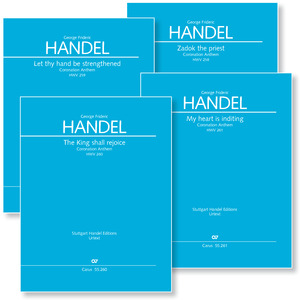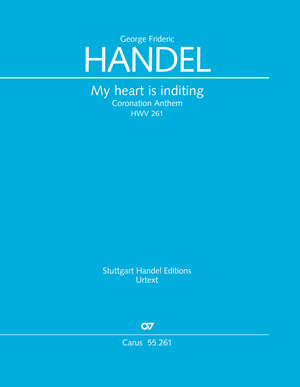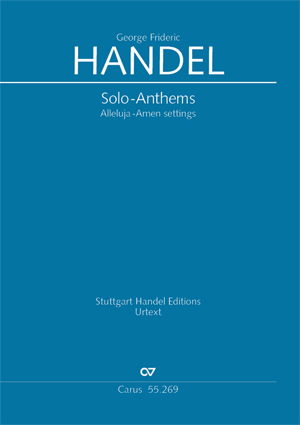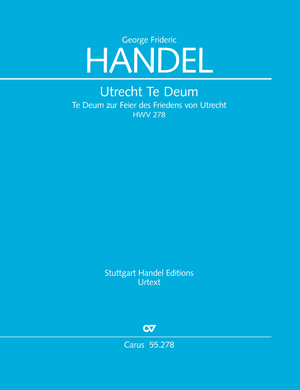Zadok the priest. Coronation Anthem I
HWV 258, 1727
Music for the ages: the coronation anthems Zadok the priest, Let thy hand be strengthened, The King shall rejoice and My heart is inditing, which Handel composed for the coronation of George II in 1727, are true masterpieces of the choral literature. Zadok the priest was performed for the anointing of the new King and more recently for the coronation of Charles III in 2023.
For the Carus edition, available either individually or as a set, musicologist, composer and flutist Alon Schab has returned to the original manuscripts, paying special attention to the specific circumstances that played a role in the creation of the anthems. Befitting such a festive occasion, Handel’s choir in 1727 was a large ensemble composed of singers from two institutions. This six- or seven-voice ensemble had to be carefully balanced to perform the passages for four or five voices.
Handel’s autograph score shows how he adapted his composition, originally conceived for a four- or five-voice choir, to the particular circumstances of the premiere: The manuscript is peppered with surprising vocal doublings, insertions, and rests, intended to ensure that, for example, the few tenors were not overpowered by the more numerous altos and basses, the boy sopranos harmonized with the mature voices, and the chorus blended well with the instruments in the rich ambience of Westminster Abbey.
This edition traces these ad hoc additions to reveal a score that is startlingly similar to Handel’s familiar and beautifully direct choral style. All editorial decisions are thoroughly documented in the critical report.
-
Composer
Georg Friedrich Händel
| 1685-1759George Frideric Handel put his exceptionally versatile compositional abilities to the test at an early age. After moving to London in 1712, where he was appointed Composer of Musick for His Majesty’s Chapel Royal in 1723, he wrote numerous masterpieces for the royal court as well as his major opere serie. For many years he enjoyed triumphant successes with his operas, which were sung by outstanding performers, with serenades, and later also with oratorios such as Saul and Israel in Egypt. Over the years Handel’s reputation grew far beyond the city where he worked; some of his choral works, particularly Messiah, have enjoyed a performance tradition which remains unbroken to this day, and are sung by choirs throughout the world. Personal details
-
Editor
Alon Schab
Frequent questions about this work
Warum ist die Stimmverteilung im Chor in einigen Passagen anders, als man sie aus bisherigen Ausgaben kennt?
Why does the distribution of voices within the choir differ from previous editions in certain passages?
 There are no questions and answers available so far or you were unable to find an answer to your specific question about this work? Then click here and send your specific questions to our Customer Services!
There are no questions and answers available so far or you were unable to find an answer to your specific question about this work? Then click here and send your specific questions to our Customer Services!





